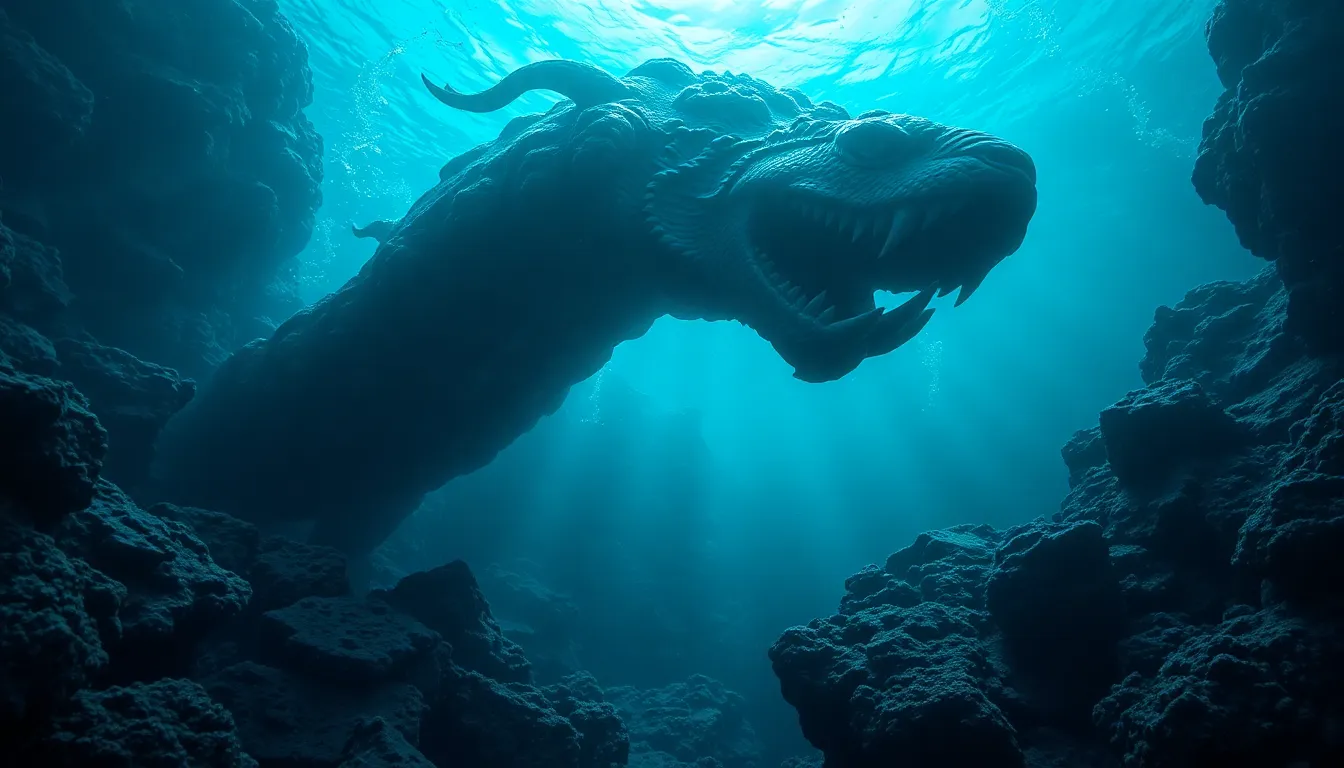The Serpent’s Domains: The World Serpent’s Influence on Specific Regions in Norse Mythology
I. Introduction
The World Serpent, known as Jörmungandr in Norse mythology, is one of the most fascinating and complex figures within this rich tradition. As a creature that encircles the Earth, Jörmungandr’s influence extends far beyond mere physical presence; it embodies the intertwining of fear, fate, and the natural world. Understanding the specific regions influenced by this iconic serpent helps illuminate the broader themes present in Norse mythology.
This article aims to explore Jörmungandr’s significance across various realms in Norse cosmology—Midgard, Asgard, Jotunheim, and Niflheim. By examining these domains, we can better appreciate the serpent’s multifaceted role and the cultural narratives that surround it.
II. The Origins and Nature of Jörmungandr
Jörmungandr’s origins can be traced back to the trickster god Loki and the giantess Angerboda. This lineage positions him within a complex web of mythological relationships, as he is also the sibling of Fenrir the wolf and Hel, the ruler of the underworld.
In Norse cosmology, Jörmungandr symbolizes the cyclical nature of existence, embodying both chaos and order. His immense size and strength represent the uncontrollable forces of nature, while his role as a guardian of the oceans emphasizes the balance between creation and destruction.
Jörmungandr is pivotal to the overarching narrative of Norse mythology, particularly in the events leading up to Ragnarok, the end of the world. His confrontation with Thor, the god of thunder, is one of the most famous tales, highlighting the themes of fate and inevitability.
III. Jörmungandr and Midgard: The Human Realm
In Midgard, the realm of humans, Jörmungandr’s presence is felt through the vast oceans that surround the land. According to myth, he lies beneath the waves, creating a boundary that separates the human world from the chaotic forces of the deep.
- Connection to the Sea: Jörmungandr’s role as a sea serpent has made him a powerful symbol of the unknown, influencing human fears and maritime lore.
- Maritime Tales: Many stories recount sailors’ encounters with sea monsters, often attributed to Jörmungandr, reflecting the perilous nature of the ocean.
- Art and Literature: Jörmungandr has been depicted in various forms of art, from Viking carvings to modern literature, showcasing his lasting impact on culture.
IV. Jörmungandr in Asgard: The Realm of the Gods
In Asgard, the realm of the Aesir gods, Jörmungandr is viewed with both fear and respect. His existence poses a challenge to the divine order, particularly in his interactions with Thor.
- Confrontations with Thor: The most notable myth involves Thor’s fishing expedition, where he attempts to catch Jörmungandr. Their struggle symbolizes the clash between strength and cunning.
- Impact on Divine Order: Jörmungandr’s role in the cosmic battle during Ragnarok highlights the fragility of the gods’ power and the inevitability of fate.
This tension between Jörmungandr and the gods illustrates the delicate balance between order and chaos that permeates Norse mythology.
V. The Role of Jörmungandr in Jotunheim: The Land of Giants
Jotunheim, the land of giants, is another critical domain where Jörmungandr’s influence is felt. His existence poses a significant threat to the giants, who often represent chaotic forces opposing the gods.
- Threat to Giants: Jörmungandr’s size and power make him a formidable adversary to the giants, who fear his potential to disrupt their plans.
- Interactions with Giant-kind: The myths often depict confrontations between Jörmungandr and various giants, emphasizing the ongoing struggle between these two forces.
These encounters serve as allegories for the larger conflicts in Norse mythology, illustrating the perpetual clash between chaos and order.
VI. The Connection to Niflheim: The Realm of Ice and Mist
Niflheim, the realm of ice and mist, presents a stark contrast to Jörmungandr’s aquatic domain. However, the serpent’s connection to this cold, dark world adds another layer to his symbolism.
- Relation to Darkness: Jörmungandr’s presence in Niflheim signifies the interplay between water and ice, embodying the duality of creation and destruction.
- Symbolic Meanings: In Norse beliefs, water often represents the source of life, while ice symbolizes death and stagnation. Jörmungandr’s existence encapsulates this duality.
Furthermore, Jörmungandr’s role in the chaotic aspects of Niflheim reinforces the idea that chaos is an essential component of the cosmos, necessary for balance.
VII. Cultural Variations: Regional Interpretations of Jörmungandr
As Norse mythology spread across various regions, so too did the stories and interpretations of Jörmungandr. Each settlement developed its understanding of the World Serpent, influenced by local culture and environment.
- Differences in Stories: Variations in the tales of Jörmungandr can be observed, with some focusing on his terrorizing aspects while others highlight his role as a protector of the seas.
- Legacy in Folklore: Jörmungandr’s influence persists in Scandinavian folklore, where he is sometimes depicted in tales of caution regarding the ocean and nature’s power.
- Comparison with Other Cultures: Similar serpentine figures appear in other mythologies, such as the Aztec deity Quetzalcoatl or the Hindu Naga, showcasing the universal themes of chaos and creation.
VIII. Conclusion
Jörmungandr’s influence across different regions in Norse mythology highlights the complexities of his character and the themes he embodies. From the depths of the ocean in Midgard to the confrontations in Asgard, his role as the World Serpent is integral to understanding the Norse cosmological framework.
The lasting legacy of Jörmungandr in modern culture reflects the enduring power of myth and its ability to shape human understanding of nature and existence. By examining regional perspectives, we gain deeper insights into the narratives that have shaped the human experience across time and space.
Ultimately, Jörmungandr serves as a reminder of the intricate connections between humanity, nature, and the divine, emphasizing the significance of myth in our ongoing quest for meaning.


